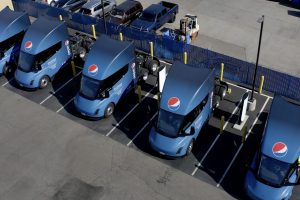Last July, a Tesla Megapack in the 300MW/450MWh Victoria Big Battery caught fire while it was being tested. The fire spread to another battery, resulting in two Megapacks in the installation being destroyed. An investigation into the incident was promptly initiated a few days later.
The results of the investigation have now been made public. According to a technical report written by experts at Fisher Engineering and the Energy Safety Response Group (ESRG), the Victoria fire last July was caused by a liquid coolant leak, which caused arcing within the Megapack’s battery modules.
“The most likely root cause of the fire was a leak within the liquid cooling system of MP-1 causing arcing in the power electronics of the Megapack’s battery modules. This resulted in heating of the battery module’s lithium-ion cells that led to a propagating thermal runaway event and the fire,” the report read.
Personnel in the area initially noticed smoke emanating from one Megapack battery at around 10 a.m. on July 30. Emergency crews were called, and once they arrived, a perimeter was established around the battery storage unit. Water was applied to the Megapack, but the flames spread to a neighboring battery unit anyway.
Fortunately, the spread of the blaze stopped there, and the fire burned itself out over a six-hour period. The results of the incident were in line with Tesla’s guidance for such incidents, which advises emergency responders to allow Megapacks that have caught fire to burn themselves out. The incident was ultimately dubbed a “safe failure,” according to a report from Energy Storage News.
It should be noted that the Megapack that started the fire had been manually disconnected from a number of monitoring, control, and data collection systems because it was undergoing testing at the time of the incident. Wind speeds at the time also contributed to the spread of the blaze.
Tesla, for its part, has implemented a number of procedural, firmware, and hardware mitigations to avoid similar incidents from happening in the future. These include improved coolant system inspections during Megapack assembly, additional alarms to the coolant system’s telemetry data to identify and respond to a possible coolant leak, and the installation of newly designed, thermally insulated steel vent shields within the thermal roof of all Megapacks, among others.
The results of the Victoria Megapack fire’s investigation could be viewed below.





